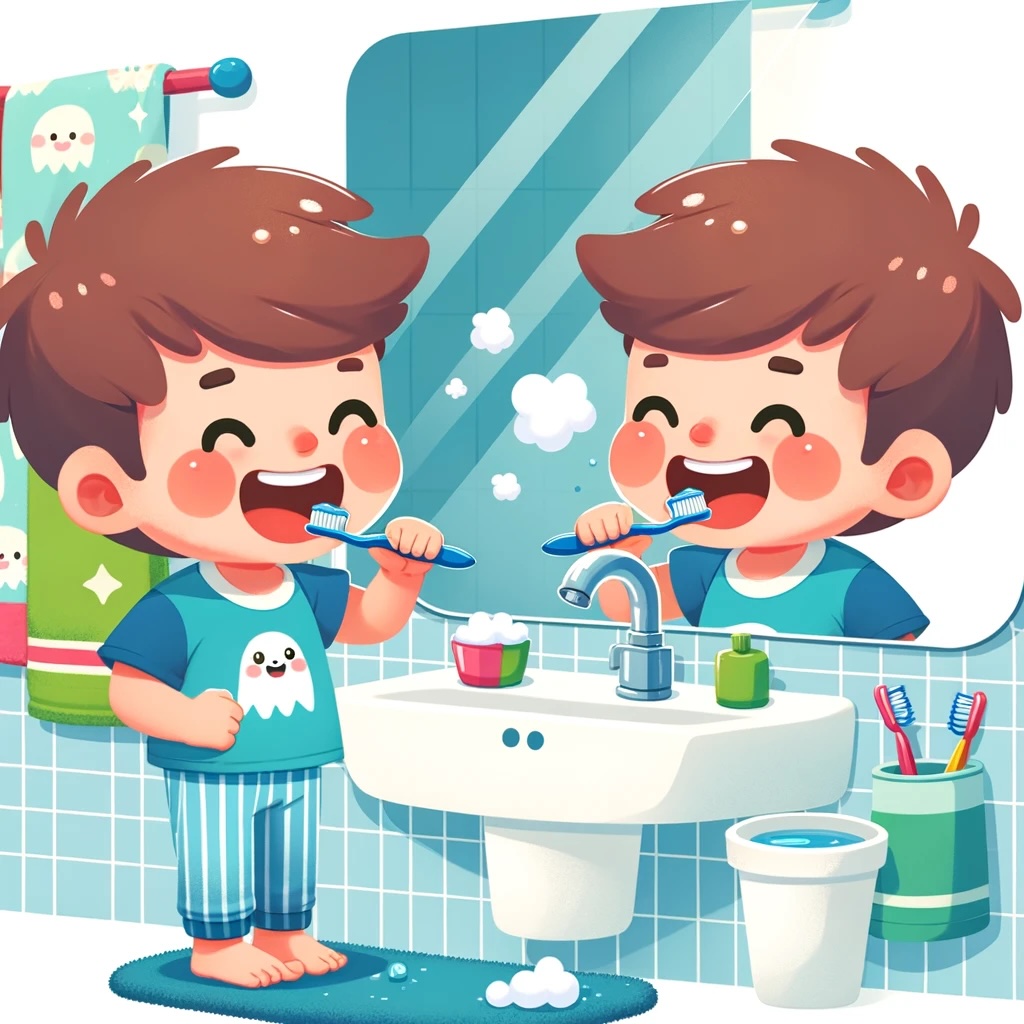As guardians of our children’s futures, one of our primary goals is to embed positive routines early on, with personal hygiene at the forefront. This essential habit is not just about maintaining cleanliness; it’s about fostering a foundation for lifelong health and well-being. Let’s dive into some effective strategies and examples to simplify the teaching process of personal hygiene to our little ones.
Modeling Good Practices:
The adage “children are great imitators” rings true, especially in learning personal hygiene. Make it a collective endeavor by integrating hygiene practices into the family’s everyday life. Share moments of brushing teeth, sanitizing hands before meals, and turning bath time into an interactive joy. Demonstrating these habits conveys their importance, encouraging your child to emulate them.
Infusing Fun into Routine:
The mundane can become delightful with a dash of creativity. Elevate toothbrushing to a dance fest by syncing it with their beloved tunes. Opt for vibrant, child-friendly hygiene products to make cleansing an adventure. Gear like toothbrushes and towels adorned with their cherished characters can make these routines eagerly anticipated.
Demystifying the ‘Why’:
Leverage your child’s innate curiosity by elucidating the reasons behind hygiene practices. Break down the benefits of dental care, hand washing, and regular baths in simple terms, linking them to their favored activities. This connection makes the hygiene lessons more relatable and memorable.
Employing Visual Encouragements:
Charts and visuals can significantly boost learning and habit formation. Craft a personalized hygiene chart adorned with icons or stickers for each completed task—be it teeth brushing, hand washing, or bathing. Celebrate their milestones and motivate them towards a consistently full chart.
Establishing Consistent Routines:
The bedrock of personal hygiene is regularity. Set a daily schedule that carves out specific times for all hygiene tasks. A predictable routine instills a sense of structure and makes these essential habits automatic.
Gamifying Hygiene:
Transform hygiene tasks into playful challenges to capture your child’s interest. Employ timers for brushing, create soap bubble contests, or use bath crayons for imaginative play during bath time. These playful approaches not only heighten the fun but underscore the significance of cleanliness.
Promoting Self-Reliance:
Encourage your child to gradually take ownership of their hygiene tasks. Guide them in applying their own toothpaste, lathering soap, and independently washing their hands. This gradual shift towards autonomy nurtures a sense of responsibility and self-care.
FAQ
Q1: At what age should I start teaching my child about personal hygiene?
A1: It’s never too early to start! Begin introducing simple hygiene practices like hand washing and teeth brushing as soon as your child can understand basic instructions, typically around the age of 2. As they grow, you can introduce more complex tasks.
Q2: How can I make my child more interested in brushing their teeth?
A2: Make it fun! Use a toothbrush with their favorite character, play a song they love during brushing time, or tell a short story involving their favorite heroes fighting “cavity monsters.”
Q3: My child hates bath time. How can I make it more appealing?
A3: Try incorporating toys or bath crayons into bath time, making it playtime as well. You can also use bubble bath with fun scents or colors to make the water more inviting.
Q4: How can I ensure my child is washing their hands properly?
A4: Teach them the steps using a song or rhyme that lasts about 20 seconds to ensure they’re washing long enough. Supervise them initially, and then periodically check they’re following the steps as they gain more independence.
Q5: What should I do if my child forgets to follow their hygiene routine?
A5: Gentle reminders are key. Encourage them with positive reinforcement rather than reprimands. Use visual aids like charts or stickers as helpful reminders for younger children.
Q6: How can I teach my child the importance of personal hygiene without scaring them about germs?
A6: Focus on the positive aspects, like feeling fresh and healthy. Explain that everyone has germs on their hands and bodies, but washing them away is a simple way to keep ourselves and others feeling good.
Q7: How often should my child bathe or shower?
A7: This can depend on their age and activity level, but a general guideline is at least two to three times a week for younger children, increasing to daily showers for older children, especially after sports or during hot weather.
Q8: Can my child use hand sanitizer instead of washing hands?
A8: Hand sanitizer can be a good option when soap and water aren’t available, but it’s not a substitute for proper handwashing. Encourage handwashing as the primary method, using sanitizer as a backup.
Final Thoughts
Embedding personal hygiene into your child’s routine is a profound contribution to their health and future happiness. By adopting these strategies, you can transform hygiene education into a joyful and meaningful journey. The essence lies in seamlessly integrating these practices into daily life, paving the way for enduring health habits and a flourishing life.